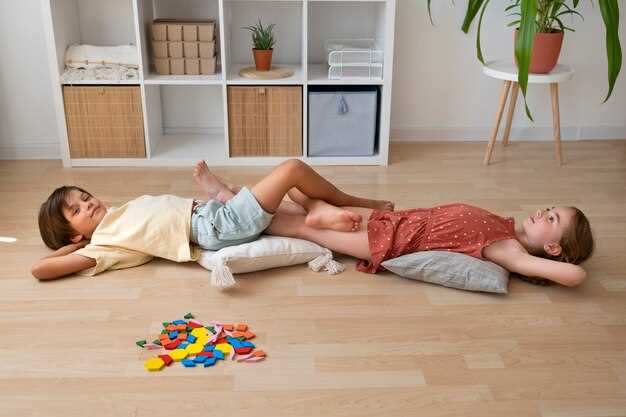
In today’s world, ensuring the safety of our children is a paramount concern for every parent. With increasing discussions around gun ownership and its implications, it becomes crucial to educate young ones about the importance of gun safety at home. Understanding how to safely handle firearms can prevent tragic accidents and empower children with knowledge about tools commonly found in many households.
Teaching kids about gun safety is not merely about prohibiting access to firearms; it is about fostering a culture of responsibility and awareness. The home should be a place where children can learn essential safety protocols in a controlled environment. By introducing them to the concepts of safety, such as treating every firearm as if it is loaded, we instill habits that can potentially save lives.
Practical guidelines for teaching children about gun safety can take various forms, from engaging discussions to structured lessons. Parents must create an open dialogue that encourages questions and promotes understanding. Such education is foundational, as it equips children with the knowledge necessary to recognize the risks associated with firearms and react appropriately in any situation.
Recognizing Real Guns vs. Toys: Educating Children on Differences

Understanding the differences between real guns and toy firearms is essential for ensuring safety in the home. Children often encounter toy guns that resemble real firearms, which can lead to dangerous misunderstandings. It’s crucial for parents to educate their kids about these differences to promote responsible behavior and prevent accidents.
Firstly, real guns are typically heavier and made from materials like metal, while toy guns are generally lighter and constructed from plastic. Encourage children to examine the weight and feel of each object carefully. Discuss the importance of never picking up a gun, whether real or toy, without permission from an adult.
Secondly, the color and design can be significant indicators. Many toy guns are brightly colored or include safety markings to distinguish them from real weapons. Teach children that while some toy guns may look realistic, they should never assume that a gun is safe based purely on its appearance.
It’s also vital to explain the purpose of real guns versus toys. Real guns are designed for specific uses such as hunting or sport shooting, while toy guns are intended for play and do not have the capacity to cause harm. Emphasize that regardless of the type, safety should always be the priority. Even toy guns can be misinterpreted in serious situations.
Role-playing scenarios can be an effective teaching method. Set up situations where children must identify whether an object is a toy or a real gun. This practice can help reinforce their understanding and improve their decision-making skills in real-life situations.
Finally, ongoing conversations about gun safety at home are essential. Regularly revisit the topic to reinforce what they have learned. By creating a safe environment where children feel comfortable asking questions, parents can play a vital role in their kids’ understanding of gun safety and the differences between real guns and toys.
Establishing Safe Storage Protocols: Preventing Unauthorized Access

Ensuring the safety of children in homes with firearms begins with establishing effective storage protocols. It is crucial to identify secure locations where guns can be stored out of reach from unauthorized access. Use locked cabinets or safes specifically designed for firearms. These secure devices not only prevent children from accessing firearms but also deter unauthorized individuals from handling them.
When selecting storage options, consider the type of locking mechanism. Biometric locks, combination locks, or key locks provide varying levels of security. Choose systems that require a deliberate action to unlock, keeping firearms safe yet accessible to responsible adults in emergencies.
Regularly check the integrity of your storage methods. Ensure that locks function properly and that storage units are installed securely, whether mounted in a closet, on a wall, or hidden in a safe space. Additionally, educate all household members about the importance of never leaving guns unattended or in unsecured spaces.
Incorporate discussions about safety protocols within family conversations. Explain the rationale behind why firearms must be stored securely to reinforce their importance. This approach not only raises awareness but also empowers children to engage in conversations about gun safety.
Lastly, conduct routine checks to ensure that firearms remain properly stored. As children grow, their ability to reach and handle objects changes, so ongoing awareness of safe storage practices is essential. Adhering to these guidelines will significantly reduce the risk of unauthorized access and promote a culture of safety within the home.
Practicing Emergency Responses: Preparing for Potential Incidents
When it comes to gun safety, preparation is crucial. Practicing emergency responses ensures that both children and adults are equipped to handle unexpected situations involving firearms. Start by establishing clear guidelines on what to do if they encounter a gun.
1. Immediate Action: Teach your kids that their first response should be to leave the area immediately. Emphasize the importance of not touching the firearm. Instilling a strong sense of safety will help them react appropriately in a crisis.
2. Calling for Help: Make sure children know how to contact a trusted adult or call 911 in case of an emergency. Role-playing these scenarios can help them practice calmly and efficiently seeking assistance.
3. Knowledge of Safe Zones: Identify safe zones within the house where children can go if they feel threatened or need to secure themselves. Reinforce the importance of staying in these areas until help arrives.
4. Regular Drills: Schedule regular drills that simulate various emergency scenarios involving firearms. Practice how to respond to each situation, encouraging questions and discussions to clarify doubts.
5. Open Dialogue: Maintain an ongoing conversation about gun safety. Encourage your kids to voice their concerns or experiences. Addressing their feelings can build trust and ensure they remember safety procedures during an actual incident.
By implementing these strategies, families can create a safer environment, prioritizing gun safety while empowering children to respond effectively in emergencies.
